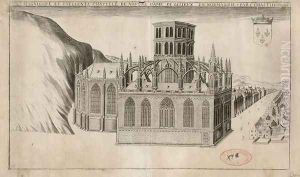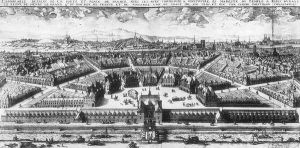Claude Chastillon Paintings
Claude Chastillon was a French architect, engineer, and engraver, born in 1559 in Châlons-en-Champagne, France. He is most renowned for his topographical engravings and drawings, which offer valuable insights into the urban and rural landscapes of his time. Chastillon's works are significant historical documents that provide a detailed visual account of many French localities during the late 16th and early 17th centuries.
In addition to his skills as an engraver, Chastillon was trained as an architect and military engineer. His expertise in these fields was recognized by French royalty, and he served under King Henry IV as a topographical engineer. In this capacity, he was tasked with the planning of sieges and the construction of fortifications, a role that combined his technical skills with his artistic talents.
Chastillon's contribution to the arts is also marked by his involvement in the design and construction of buildings, although fewer details are known about specific projects he may have undertaken or completed. He traveled extensively throughout France, which allowed him to produce a wide array of drawings and engravings that depicted the country's cities and fortresses with remarkable precision.
Despite Chastillon's importance in his time, his work as an architect and engineer has been somewhat overshadowed by his achievements as an engraver. His engravings are characterized by their clarity, attention to detail, and the impressive scope of the landscapes and cityscapes they portray. These engravings are not only artistic accomplishments but also serve as valuable resources for historians seeking to understand the physical appearance and development of French towns and cities during the Renaissance.
Claude Chastillon passed away in 1616, leaving behind a legacy as a multifaceted figure who bridged the gap between art and science. His work remains a testament to the rich architectural and cultural heritage of France and continues to be studied and admired by art historians, architects, and engineers alike.

